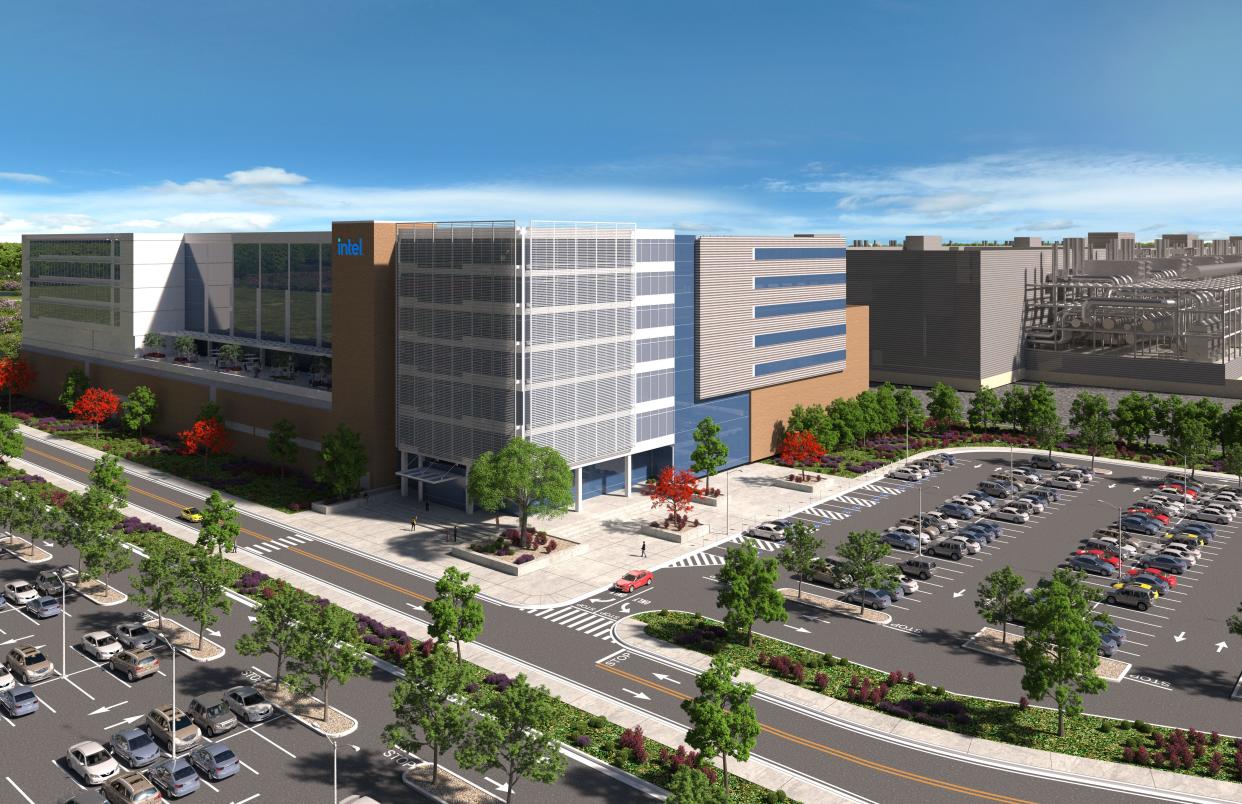Granville encouraged to build 'common vision' with neighbors ahead of Intel's arrival

GRANVILLE—Invited to share insight about how to prepare for the massive Intel development, local experts shared guidance with the Granville Council at its biennial retreat, held at the Bryn Du Carriage House on Saturday, Feb. 26.
Five invitees—Keith Myers, former planning consultant for the village of New Albany; Carl Jennings, a Granville–based project management consultant; Bill Habig, Mid-Ohio Regional Planning Committee (MORPC) board member on behalf of the Granville Village Council; Jack Burriss, chairman of the Granville Planning Commission; and Jeff Brown, superintendant of Granville Schools—spoke to Village Council members and interested residents throughout two 45–minute roundtable discussions. The leaders aimed to aid the village in its preparation for the challenges that are expected to arise when Intel arrives in Licking County.
Intel Corporation announced plans to begin construction this year on a $20 billion computer chip manufacturing facility a few miles south of Johnstown on Jersey Township land to be annexed into sprawling New Albany.
The invitees urged the village to facilitate communication and foster unity with government officials in neighboring towns.
"Granville and (its neighbors) need to develop some kind of a common vision," said Myers.
Burriss, who acknowledged that keeping in close touch with other towns will be a new challenge in of itself, reiterated Myers's point.
"Working with some people we haven't necessarily seen as cohorts is going to be very, very important," he said.
Habig assured attendees that MORPC, "Central Ohio’s regional council for more than 70 members comprised of counties, cities, villages, townships, and regional organizations," would provide support in addressing this challenge.
"The most important thing (for MORPC) is bringing the governments together," he said. "MORPC is here to help all of the governments."
The discussion leaders also encouraged the village to be proactive in preparation, with Intel expected to begin building its facility before the end of the calendar year.
"We can't wait. We have to start today," said Habig.
"Pretty soon, there are going to be 7,000 construction workers. Where are they going to live?" said Burriss.
Myers and Jennings cited other previously–urbanized American cities that could serve as examples for leaders within the Columbus metropolitan area to learn from.
According to Myers, locals can look at Austin, Texas, as the "poster child" resembling what is to come in the area. In 2020, Dell Children's Medical Center announced expansion plans in the Austin area. Just one year later, Tesla, Inc. moved its headquarters to the city as well.
Jennings connected greater Columbus's current situation to that of the Denver–Boulder area in the 1970s, where he estimated "10 to 15 thousand" people were moving per month.
Brown said that while he is willing to work with any interested local groups to reach resolutions, it is too early to make any conclusive statements about how Granville will choose to accommodate a larger number of students expected in the area as the population starts to grow.
"We need the data to drive the conversation," he said.
The regular Granville Village Council meetings take place on the first and third Wednesdays of every month, at 7:30 P.M. in the Village Council Chambers, 141 East Broadway.
An audio recording of the Village Retreat can be listened to here: https://www.youtube.com/watch?v=yYIIUgNcGKc&t=5513s.
This article originally appeared on Newark Advocate: Granville must build common vision ahead of Intel development

